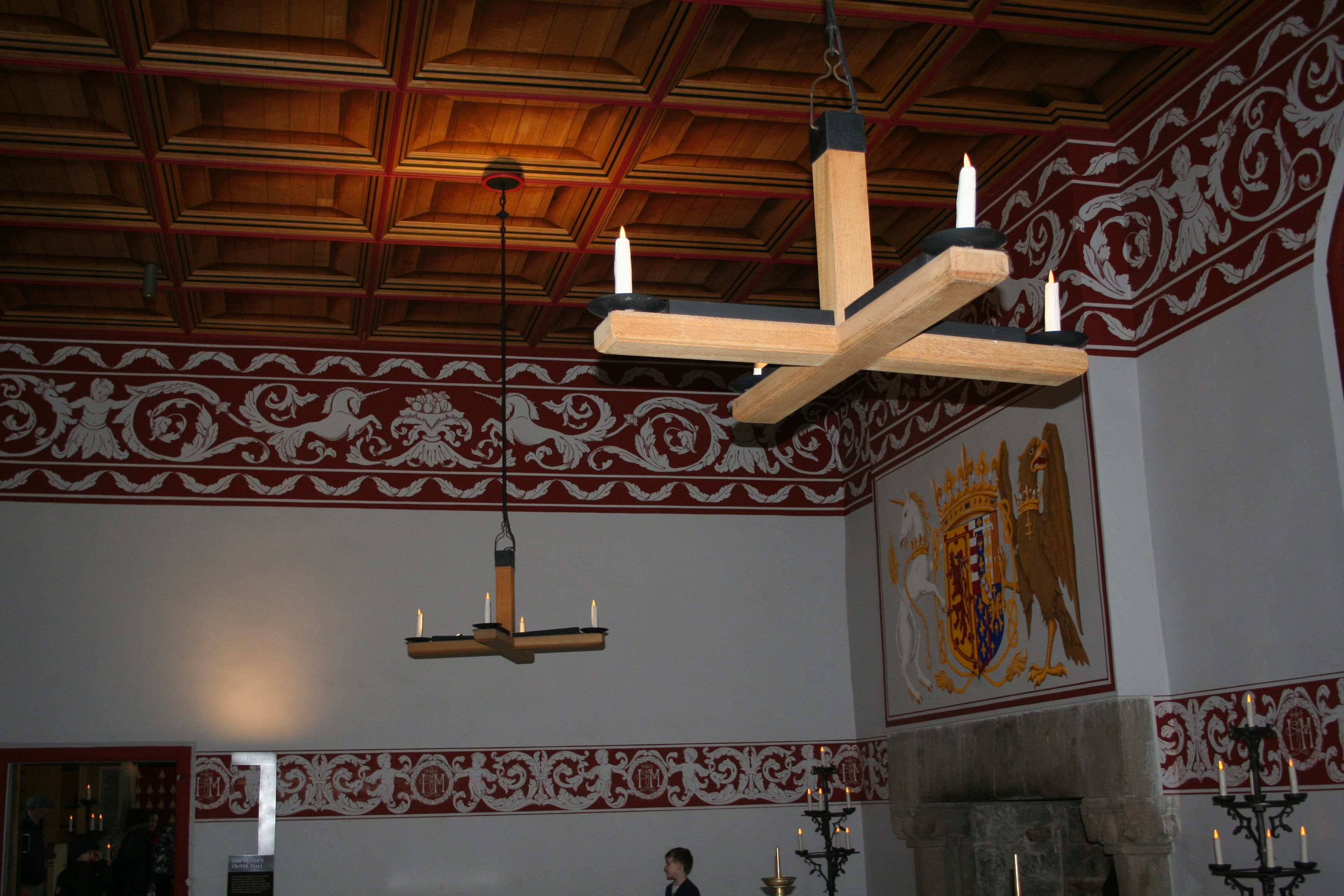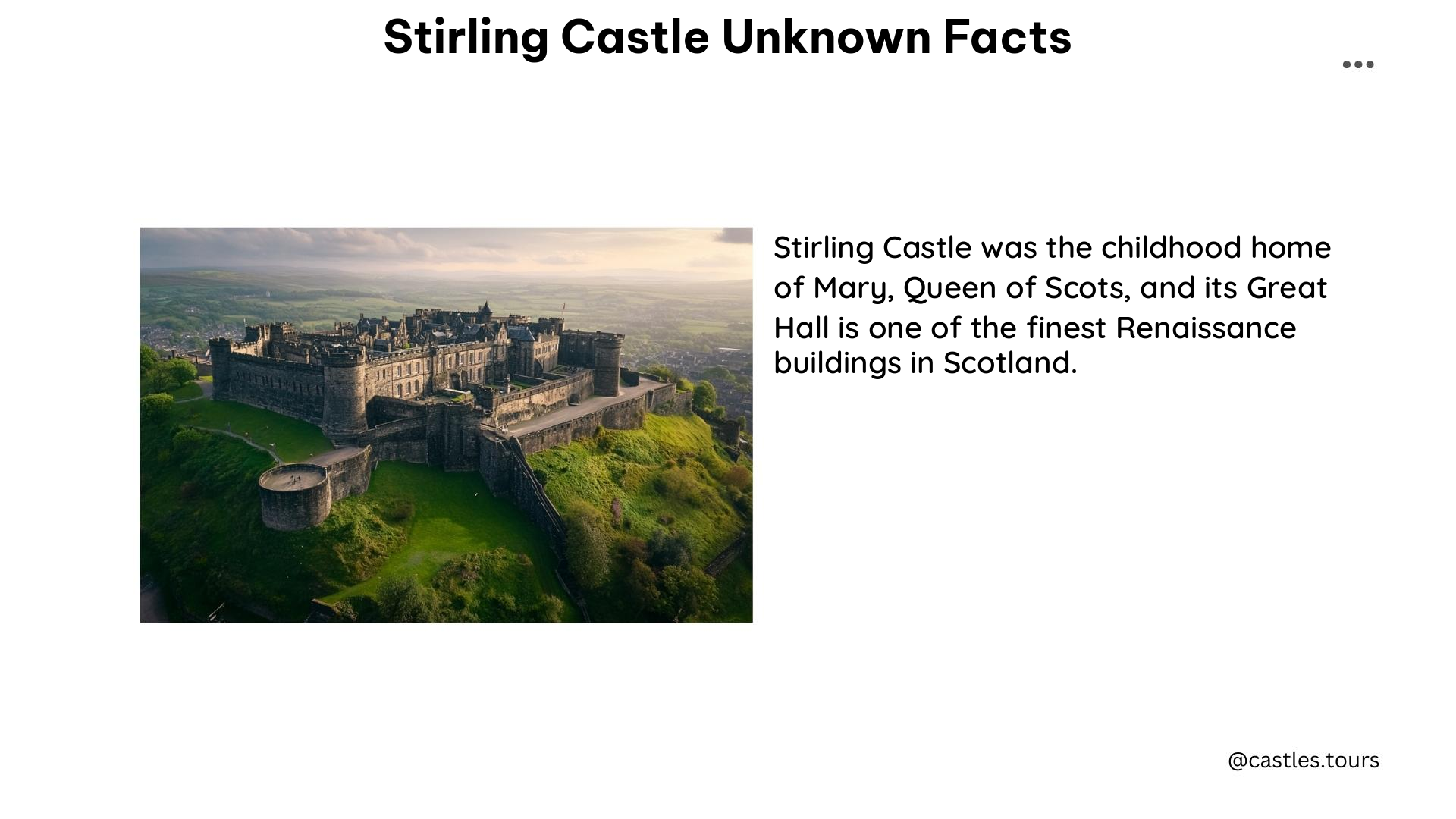Stirling Castle, a majestic fortress in Scotland, has been a witness to centuries of history, intrigue, and remarkable events. Beyond the well-known tales, there lies a treasure trove of lesser-known facts that shed light on the castle’s rich and captivating past. In this blog post, we’ll delve into the hidden gems of Stirling Castle, uncovering the unknown and shedding new light on this iconic Scottish landmark.
The Lion’s Den: A Royal Menagerie

Nestled within the castle walls, the Lion’s Den is an open rectangular courtyard that holds a fascinating secret. It is believed that this unique space was once the home of James V’s pet lion, a symbol of the King of Scots. The presence of a live lion within the castle walls adds an intriguing layer to the castle’s history, hinting at the grandeur and eccentricities of the Scottish monarchy.
The Oldest Surviving Football: A Surprising Discovery

Stirling Castle has yielded a remarkable archaeological find – the oldest surviving football in the world. Discovered behind the panelling in the Queen’s chamber, this ancient ball is a true treasure. Crafted from an inflated pig’s bladder wrapped in cow’s hide, the football is approximately half the size of modern footballs, offering a glimpse into the recreational pursuits of the castle’s inhabitants.
John Damian’s Ill-Fated Flight Attempt
In 1507, the castle witnessed a remarkable and ill-fated attempt at flight. Italian alchemist John Damian, who had been appointed as the court’s “Flyer” by King James IV, decided to take to the skies. Donning a set of feathered wings, Damian jumped from the castle’s battlements, hoping to soar like a bird. Alas, his experiment ended in disaster, as he crashed into a dunghill, breaking his thigh bone in the process. This failed attempt at human flight serves as a testament to the castle’s history of scientific exploration and the daring spirit of its inhabitants.
Mary Queen of Scots: A Lifelong Connection
Stirling Castle holds a special place in the life of Mary Queen of Scots. The young queen was crowned at the castle at the tender age of nine months, and she would later return to the fortress with her son, James VI. The castle’s significance in Mary’s life is a testament to its role as a crucial seat of power and a symbol of Scottish sovereignty.
Abandonment and Rebirth: The Castle’s Tumultuous History
Stirling Castle has not always enjoyed the well-preserved state it boasts today. During the Wars of Independence, the castle was abandoned for many years, falling into disrepair. However, the castle was later rebuilt and fortified, with significant contributions from monarchs like James IV and James V. This tumultuous history of abandonment and rebuilding adds to the castle’s allure, showcasing its resilience and the enduring spirit of the Scottish people.
Music, Celebrations, and Revelry: The Castle’s Cultural Legacy
Stirling Castle’s esplanade has become a hub of cultural activity, hosting concerts and events that draw visitors from around the world. Famous bands like R.E.M. and Bob Dylan have graced the castle’s stage, while the esplanade also serves as the site for Stirling’s Hogmanay celebrations, a lively New Year’s Eve festival. This cultural legacy demonstrates the castle’s ability to adapt and evolve, serving as a backdrop for both historical events and modern-day revelry.
Violent Histories: The Castle’s Darker Moments
Stirling Castle has not been immune to the darker moments of Scottish history. One such event was the murder of William, 8th Earl of Douglas, who was stabbed 26 times and thrown from a window in the castle in 1452. This act of violence serves as a reminder of the castle’s tumultuous past and the power struggles that have unfolded within its walls.
Restoration and Preservation: Safeguarding the Castle’s Legacy
In recent decades, Stirling Castle has undergone extensive restoration and preservation efforts, ensuring that its rich history and architectural significance are maintained for future generations. Projects such as the refurbishment of the Royal Palace and the Chapel Royal in the 1990s and 2000s have breathed new life into the castle, allowing visitors to experience its grandeur and splendor.
Stirling Castle is a true gem of Scottish history, with a wealth of untold stories and hidden facts that continue to captivate and intrigue. From the Lion’s Den to the oldest surviving football, the castle’s lesser-known details offer a unique perspective on its past, inviting visitors to delve deeper and uncover the secrets that lie within its walls.
References:
– Britannica. (n.d.). Stirling Castle. Retrieved from https://www.britannica.com/topic/Stirling-Castle
– Historic Environment Scotland. (n.d.). Stirling Castle. Retrieved from https://www.historicenvironment.scot/visit-a-place/places/stirling-castle/
– The Scotsman. (2015, October 5). 8 facts you may not know about Stirling Castle. Retrieved from https://www.scotsman.com/regions/8-facts-you-may-not-know-about-stirling-castle-1493539
– Historic Environment Scotland. (n.d.). Stirling Castle: History. Retrieved from https://www.historicenvironment.scot/visit-a-place/places/stirling-castle/history/.
